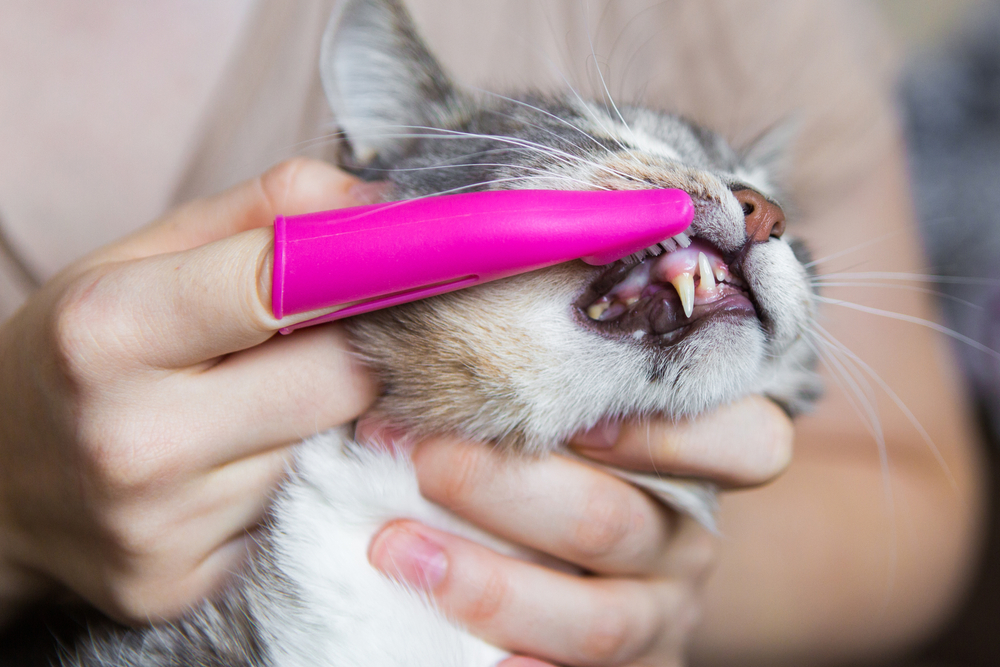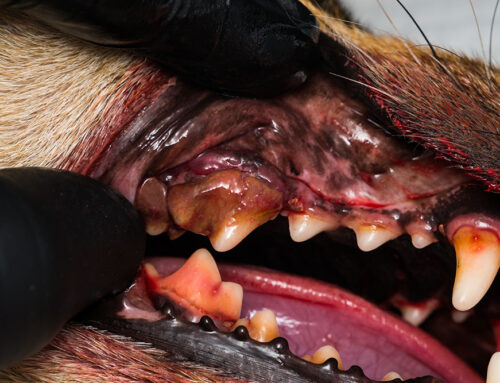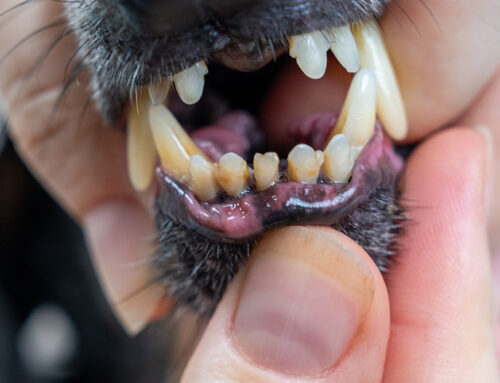You’ve seen your cat devour a can of tuna and your dog demolish a stuffed squirrel, so there’s no way you’re getting near those razor-sharp weapons of destruction (i.e., teeth). Although your reluctance is understandable, brushing your pet’s teeth is easier and considerably less terrifying than you’d think.
Learn how to brush your pet’s teeth by following our North Bay Veterinary Dentistry team’s step-by-step guide. Brushing your pet’s teeth each day is the best way to slow plaque and tartar accumulation and keep your furry pal’s mouth as healthy and pain-free as possible.
Step #1: Gather the necessary supplies to brush your pet’s teeth
Before wrangling your pet for a toothbrushing, ensure you have all the essentials within reach because you need everything at hand once you have your pet calmly by your side. Your pet’s toothbrushing tool kit should include:
- Toothbrush — While a toothbrush intended for people can certainly scrub your furry pal’s teeth, you should use a small, soft-bristled toothbrush intended for pets. Keep in mind that some pets may only tolerate a finger brush.
- Toothpaste — Use pet-safe toothpaste, not a dental product intended for people, because fluoride can be toxic to pets. To help encourage your four-legged friend to cooperate while you brush their teeth, use pet-safe toothpaste in a flavor such as poultry, seafood, or vanilla mint.
- Treats — When first training your pet to tolerate a toothbrushing, offer them their favorite treats as a reward for cooperating.
- Your courage — Brushing your pet’s teeth really isn’t that scary. All it takes is patience, perseverance, and plenty of treats—and a heaping dose of calm, confident courage!
Step #2: Choose a quiet time and location to brush your pet’s teeth
The best time to brush your pet’s teeth is when distractions will be minimal, so you can both focus on the task at hand. Perform this task in an out-of-the-way room at a time when your house is quiet, such as after the kids go to bed or first thing in the morning before everyone gallops down the stairs for breakfast.
Step #3: Gradually introduce your pet to their toothbrush and toothpaste
Rather than abruptly shoving the toothbrush into your pet’s mouth, gradually introduce them to this new item. Allow your four-legged friend to gnaw the brush so they can become accustomed to the bristles’ sensation in their mouth. To introduce your pet to toothpaste, squirt a dollop on your finger and let your furry pal lick it off.
Step #4: Use your finger to dab toothpaste on your pet’s teeth
Once your pet has been introduced to their toothpaste’s delicious flavor, apply a dab to your finger and slowly work your finger between their cheek and teeth. Quickly swipe the toothpaste across your furry pal’s teeth, and allow them to lick off the tasty substance.
Step #5: Introduce your pet to the toothbrush
Once your pet is comfortable with your toothpaste-coated finger, introduce them to their toothbrush. Slip the brush between your pet’s cheek and teeth, and gently scrub to buff away plaque.
Step #6: Brush as much as your pet will tolerate
Your pet will likely be hesitant to open their mouth and say, “Ahh,” so you can thoroughly brush their teeth, especially the inner tooth surfaces. Don’t despair! Focus on the tooth areas you can successfully reach such as the outer surface and the incisors and canines in the front.
Step #7: Lavish your pet with praise

See, that wasn’t so scary! Although your furry pal may have given you the side eye when you placed your finger in their mouth, you both benefited from the process. Your pet received the gold standard of at-home dental care, and you get the satisfaction of knowing that brushing your four-legged pal’s teeth is a piece of cake. Lavish your pet with love and let them know they did a wonderful job cooperating with this health care endeavor. To prevent your pet from making a negative association with toothbrushing, always end each session on a positive note, even if they only tolerated having a few teeth cleaned.
Although your pet may tolerate regular toothbrushing sessions, they still require professional veterinary dental care. From complete dental cleanings to extracting fractured teeth, our North Bay Veterinary Dentistry team has the skills and expertise to handle any oral health problem your pet presents. Schedule your pet’s advanced dental care appointment with our team.






Leave A Comment